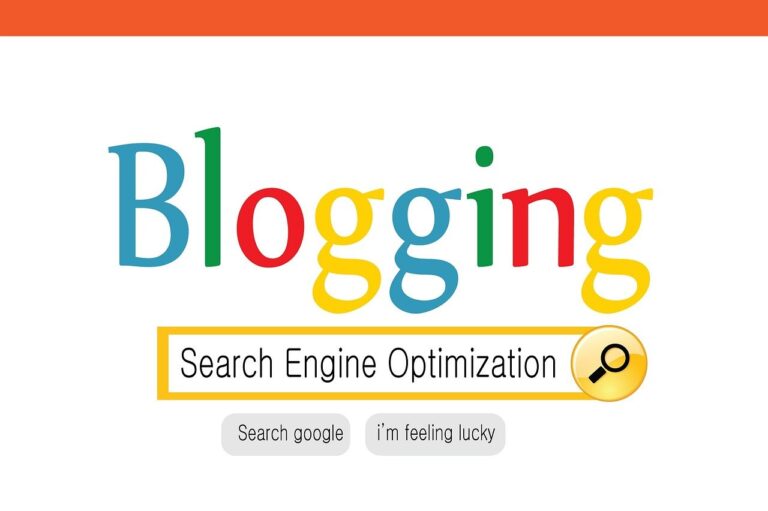A content calendar is a powerful tool for holistic marketing practitioners. It helps maintain a consistent and impactful online presence. By organizing your content creation and distribution efforts, you can ensure a steady flow of valuable information to your audience. This also reduces stress and increases efficiency.

Creating a content calendar helps you strategically plan, structure, and amplify your communication efforts. This systematic approach allows you to align your content with your marketing goals, capitalize on important dates or events, and maintain a balanced mix of content types across various platforms.
Implementing a content calendar enables you to stay ahead of deadlines, collaborate more effectively with team members, and maintain consistency in your messaging. By planning your content in advance, you can also ensure a diverse range of topics that cater to different segments of your audience. This ultimately leads to increased engagement and growth for your holistic practice.
Key Takeaways
- A content calendar organizes your marketing efforts and improves consistency
- Strategic planning helps align content with business goals and audience needs
- Regular content creation and distribution leads to increased engagement and practice growth
Understanding The Importance Of A Content Calendar
A content calendar is a powerful tool for organizing and streamlining your digital marketing efforts. It helps you maintain consistency, boost online visibility, and align your content with your overall marketing goals.
Benefits Of Consistency In Digital Marketing
Consistency in digital marketing is crucial for building brand recognition and trust. A content calendar helps you maintain a regular publishing schedule. This ensures your audience knows when to expect new content from you. This predictability can increase engagement and loyalty.
By planning your content in advance, you can maintain a consistent brand voice and messaging across all platforms. This cohesiveness strengthens your brand identity and makes your marketing efforts more effective.
A content calendar also allows you to distribute your content evenly across different topics and formats. This variety keeps your audience interested and caters to different preferences, maximizing your reach and impact.
Enhancing Online Visibility And Client Engagement
A well-planned content calendar can significantly boost your online visibility. By consistently publishing high-quality content, you improve your search engine rankings and increase your chances of being found by potential clients.
You can use your calendar to plan content around key industry events, holidays, or trending topics. This timeliness makes your content more relevant and shareable, increasing engagement and expanding your reach.
A content calendar also helps you maintain an active presence on social media platforms. Regular posts keep your audience engaged and encourage interaction, fostering a sense of community around your brand.
Aligning Content With Marketing Goals
A content calendar is an essential tool for ensuring your content aligns with your broader marketing objectives. By planning ahead, you can create content that supports specific campaigns, product launches, or business goals.
You can use your calendar to balance different types of content, such as educational posts, promotional material, and user-generated content. This mix helps you achieve various marketing goals simultaneously.
A well-structured content calendar allows you to track the performance of your content over time. You can identify patterns, understand what resonates with your audience, and adjust your strategy accordingly to improve your marketing outcomes.
Steps To Create An Effective Content Calendar
Creating a content calendar requires careful planning and consideration of your audience, goals, and distribution channels. By following these steps, you’ll develop a robust calendar to guide your content strategy.
Identifying Your Target Audience And Their Needs
Start by defining your target audience’s demographics, interests, and pain points. Use data from website analytics, social media insights, and customer surveys to build detailed buyer personas. Consider factors like age, location, job titles, and online behaviors.
Create a table summarizing key audience segments and their characteristics. This will help you tailor content to their specific needs and preferences.
Conducting a content audit can reveal which topics and formats resonate most with your audience. Analyze engagement metrics to identify top-performing content and areas for improvement.
Keep your finger on the pulse of industry trends and emerging topics that matter to your audience. Set up Google Alerts or use social listening tools to stay informed about relevant conversations.
Setting Clear Marketing Goals And Objectives
Define your goals before creating your content calendar. Establish SMART objectives:
- Specific: Increase website traffic by 25%
- Measurable: Generate 100 new email subscribers per month
- Achievable: Publish 3 blog posts weekly
- Relevant: Align with overall business growth targets
- Time-bound: Achieve goals within 6 months
Prioritize objectives based on their impact on your business. Focus on metrics that directly contribute to revenue growth, such as lead generation or conversion rates.
Align your content goals with broader marketing and business objectives. This ensures your content efforts support overarching company strategies and initiatives.
Choosing The Right Platforms For Content Distribution
Identify where your target audience spends their time online. Research which social media platforms, forums, or industry-specific websites they frequent.
Consider the strengths of each platform:
- LinkedIn: Professional networking and B2B content
- Instagram: Visual storytelling and product showcases
- YouTube: In-depth tutorials and thought leadership videos
- Twitter: Real-time updates and customer engagement
Match content types to platforms. For example, long-form articles work well on your blog or LinkedIn, while short video clips are ideal for TikTok or Instagram Reels.
Evaluate your resources and capacity to maintain a consistent presence on each platform. It’s better to excel on fewer channels than to spread yourself too thin across many.
Planning Your Content
Effective content planning involves auditing existing materials, generating fresh ideas, and diversifying your content mix. These steps ensure your calendar aligns with your marketing goals and resonates with your target audience.
Conducting A Content Audit
Begin by reviewing all the content you’ve produced to date. Evaluate each piece’s performance and relevance to your current strategy. Identify gaps in your content and areas for improvement.
Look for trends in engagement metrics. Which topics or formats performed well? Which fell short of expectations?
Create a spreadsheet to track:
- Content title and type
- Publication date
- Target audience
- Key performance indicators (views, shares, conversions)
- Content gaps or outdated information
This audit will help you make data-driven decisions for your future content strategy.
Brainstorming And Generating Content Ideas
With insights from your audit, it’s time to generate new content ideas. Organize a brainstorming session with your team to explore potential topics.
Consider using these techniques:
- Mind mapping
- Customer feedback analysis
- Competitor content research
- Trend forecasting
Create a backlog of ideas, prioritizing those that align with your goals and audience needs. Remember to factor in seasonality and industry events relevant to your business.
Keep your ideas organized in a central location, easily accessible for future planning sessions.
Creating A Content Mix: Types Of Content To Include
Diversify your content to engage different segments of your audience and address various stages of the buyer’s journey. A balanced mix ensures you’re not over-relying on a single format.
Consider including:
- Blog posts
- Videos
- Infographics
- Podcasts
- Social media updates
- Whitepapers or ebooks
- Case studies
- Webinars
Tailor your content types to your audience preferences and the platforms you’re using. For example, visual content might perform better on Instagram, while in-depth articles could be more suitable for LinkedIn.
Experiment with different formats and analyze their performance to refine your content mix over time.
Organizing And Scheduling Content

Effective content organization and scheduling are crucial for maintaining consistency in your marketing efforts. A well-structured approach ensures timely delivery and maximizes audience engagement.
Using Tools And Software For Content Calendar Management
Content calendar tools streamline your strategy and improve team collaboration. Popular options include Trello, Asana, and CoSchedule. These platforms offer features like drag-and-drop interfaces, task assignments, and deadline tracking.
Choose a tool that integrates with your existing workflow and accommodates your team’s needs. Look for features such as content categorization, status updates, and performance analytics.
Consider using a shared Google Calendar for a simple, cost-effective solution. It allows you to color-code content types and set reminders for important dates.
Setting Up A Posting Schedule
Determine your publishing frequency based on your audience’s preferences and your team’s capacity. Analyze your target demographic’s online behavior to identify optimal posting times.
Create a consistent schedule across different platforms. For example:
- Blog posts: Twice a week
- Social media: Daily on weekdays
- Email newsletters: Weekly
Factor in seasonal trends, industry events, and product launches when planning your content. Use your calendar to visualize content distribution and ensure a balanced mix across platforms.
Balancing Frequency And Quality Of Posts
Quality should always take precedence over quantity. Prioritize creating valuable, engaging content that resonates with your audience. Avoid sacrificing depth for the sake of frequent posting.
Set realistic goals for content production. Consider your resources, including time, budget, and team size. It’s better to publish fewer high-quality pieces than to flood your channels with subpar content.
Regularly assess your content’s performance. Use analytics to identify which types of posts generate the most engagement. Adjust your schedule and content mix based on these insights to optimize your strategy.
Implementing And Monitoring Your Content Calendar

A well-executed content calendar requires consistent implementation and careful monitoring. Regular tracking and analysis of performance metrics allow you to refine your strategy for optimal results.
Tips For Staying Consistent
Consistency is key to successful content marketing. Set clear goals for your content calendar to guide your efforts. Create a routine for content creation and stick to it.
Use scheduling tools to automate posting across platforms. This ensures your content goes out at optimal times, even when you’re busy.
Batch similar tasks together to improve efficiency. For example, dedicate one day to writing blog posts and another to creating social media graphics.
Build a content buffer by creating pieces in advance. This gives you a safety net for busy periods or unexpected disruptions.
Regularly review and update your calendar. As priorities shift, be prepared to adjust your planned content accordingly.
Tracking Performance And Engagement Metrics
Monitor key metrics to gauge the effectiveness of your content. Track website traffic, engagement rates, and conversion rates for each piece of content.
Use analytics tools to measure:
- Page views and unique visitors
- Time spent on page
- Social media shares and comments
- Email open and click-through rates
- Lead generation numbers
Pay attention to which topics and content types resonate most with your audience. This information helps refine your future content strategy.
Set up a dashboard to visualize your key performance indicators (KPIs). This provides an at-a-glance view of your content’s performance over time.
Adjusting Your Strategy Based On Analytics
Regularly analyze your performance data to identify trends and areas for improvement. Use audience insights to create more targeted content.
Experiment with different content formats, topics, and posting times. A/B test headlines, visuals, and calls-to-action to optimize engagement.
Be prepared to pivot your strategy if certain content types aren’t performing well. Double down on what works and phase out underperforming formats.
Consider seasonal trends and industry events when planning future content. Align your calendar with these opportunities to maximize relevance and impact.
Continuously gather feedback from your audience through surveys or social media polls. Use this input to shape your content strategy and meet your audience’s evolving needs.
Best Practices For Holistic Practitioners

Effective content strategies for holistic practitioners combine personalization, integration of core principles, and timely relevance. These approaches help engage your audience, reinforce your expertise, and keep your content calendar dynamic and impactful.
Personalizing Content For Your Audience
Understand your target audience’s needs and preferences to create content that resonates.
Identify common health concerns and provide actionable advice tailored to your specific clientele.
Use surveys, social media insights, and client feedback to gather information about their interests and pain points.
Create buyer personas representing different segments of your audience. This helps you craft messages that speak directly to their unique situations and motivations.
Personalize your content by:
- Addressing specific health issues relevant to your practice
- Sharing client success stories (with permission)
- Offering tailored wellness tips for different life stages or health conditions
Remember to maintain a balance between professional expertise and relatable, approachable language. This builds trust and encourages engagement with your content.
Integrating Holistic Principles Into Your Content
Weave your holistic philosophy throughout your content to reinforce your unique approach. Explain how various aspects of health and wellness interconnect, emphasizing the whole-person perspective that sets holistic practices apart.
Create content that offers practical solutions while educating your audience about holistic principles. For example:
- Discuss how nutrition affects mental health
- Explore the mind-body connection in stress management
- Highlight the importance of lifestyle factors in overall wellness
Use case studies or hypothetical scenarios to illustrate how holistic approaches can address complex health issues. This helps your audience understand the practical applications of your methods.
Include content that explains your specific modalities or techniques, demystifying them for potential clients. This builds credibility and helps set realistic expectations for your services.
Leveraging Seasonal And Trending Topics
Stay relevant by aligning your content with seasonal health concerns and current trends in wellness. Consider factors like industry news cycles and seasonal trends when planning your content calendar.
Create timely content around:
- Seasonal allergies and natural remedies
- Holiday stress management techniques
- New Year’s resolutions and sustainable health goals
Monitor health and wellness news to address emerging topics that align with your practice. This positions you as a knowledgeable and up-to-date resource for your audience.
Participate in health awareness months relevant to your field. Develop themed content series that dive deep into specific topics, providing valuable information over an extended period.
Be prepared to adjust your content calendar to address unexpected health trends or concerns. This flexibility allows you to remain a timely and trusted source of information for your audience.
Conclusion

A well-crafted content calendar is essential for your holistic marketing strategy. By implementing the techniques discussed, you’ll enhance your content creation process and maintain consistency.
Remember to set clear goals for your content calendar. This will guide your efforts and help measure success.
Choose the right tools to manage your calendar effectively. Options range from simple spreadsheets to specialized software.
Plan a mix of evergreen and timely content to keep your audience engaged throughout the year. This variety will ensure your content remains relevant and interesting.
Collaborate with your team to generate diverse ideas and perspectives. Regular brainstorming sessions can fuel your content pipeline.
Be flexible and willing to adjust your calendar as needed. Market trends and audience preferences may shift, requiring adaptations to your plan.
Review and analyze your content performance regularly. Use these insights to refine your strategy and improve future content.
By following these guidelines, you’ll create a robust content calendar that drives results and supports your overall marketing goals.
Frequently Asked Questions

Content calendars are essential tools for organizing marketing efforts and maintaining consistency. They help streamline workflows, align content with business goals, and ensure a balanced mix of content types across channels.
What are the key elements to include in a content marketing plan?
A content marketing plan should include clear goals, target audience profiles, and content themes. It’s crucial to outline specific content types, publishing channels, and frequency. Include key performance indicators (KPIs) to measure success.
Assign team responsibilities and set deadlines for content creation, review, and publication. Consider creating a mix of evergreen and timely content to keep your audience engaged throughout the year.
How can one create an effective content calendar for social media?
Start by identifying your target platforms and optimal posting times. Research your audience’s online behavior and preferences. Define your publishing cadence based on your team’s capacity and industry trends.
Plan content themes that align with your brand voice and marketing objectives. Include a variety of post types such as promotional, educational, and entertaining content. Leave room for real-time engagement and trending topics.
What are some best practices for maintaining a content calendar to ensure consistency?
Regularly review and update your calendar to keep it relevant. Set realistic deadlines and buffer time for unexpected changes. Use color-coding or tags to categorize different content types or campaigns.
Implement a clear approval process to maintain quality control. Schedule periodic content audits to assess performance and make necessary adjustments. Encourage team collaboration and input to keep ideas fresh and diverse.
What are the benefits of using a content calendar for marketing campaigns?
Content calendars improve organization and reduce last-minute stress. They help maintain a consistent brand voice across all channels. Calendars facilitate better resource allocation and prevent content gaps.
They enable you to plan for seasonal trends and important dates in advance. Content calendars also provide a bird’s-eye view of your marketing efforts, making it easier to balance content types and topics.
How can a content calendar be structured to support a holistic marketing strategy?
Align your content calendar with overarching business goals and marketing objectives. Integrate various marketing channels to ensure a cohesive message across platforms. Include touchpoints for different stages of the customer journey.
Plan for cross-promotion opportunities between different content pieces and channels. Incorporate both short-term campaigns and long-term brand-building efforts. Allow flexibility to adapt to market changes and emerging opportunities.
What tools or software options are recommended for building a content calendar?
Popular options include project management tools like Trello, Asana, or Monday.com. Spreadsheet applications such as Google Sheets or Excel offer customizable templates. Specialized content calendar software like CoSchedule or Hootsuite Planner provide integrated features for social media management.
Choose a tool that fits your team’s size, budget, and collaboration needs. Also, consider options that offer integrations with your existing workflow tools. This will help streamline processes and improve efficiency.






